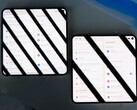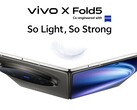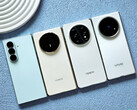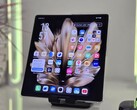Verdict: Thin foldable form factor comes with a few trade-offs
The Vivo X Fold5 is an impressively thin foldable smartphone that is equipped with a very decent Zeiss camera system and appealing OLED panels.
As the X Fold5 is not the successor to last year's Pro model, a current flagship SoC was not to be expected. Nevertheless, the performance offered is more than sufficient for everyday use.
However, the extreme heat development and pronounced throttling are more problematic.
The run times are somewhat disappointing given the large battery capacity. There is certainly potential for optimization here, which also applies to Vivo's communication on updates and sustainability features.
Pros
Cons
Price and availability of the Vivo X Fold5
The Vivo X Fold5 is only being launched in China and India for the time being, so details regarding global availability are still pending.
The base 12 GB / 256 GB model costs ¥6,999 yuan (approx. €840). As an import, prices at Trading Shenzhen start at around €1,030.
In India, the 16 GB / 512 GB variant of the Vivo X Fold5 can be had for ₹1,44,990 on Amazon IN.
Table of Contents
- Verdict: Thin foldable form factor comes with a few trade-offs
- Specifications of the Vivo X Fold5
- Build and features: X Fold5 is waterproof thanks to IP rating
- Communication and operation: Wi-Fi 7 onboard but no eSIM
- Software and sustainability: Android 15-based Origin OS
- Cameras: 50 MP triple-camera setup with cooperation from Zeiss
- Display: Dual AMOLED screens with fast response times and 240 Hz PWM
- Performance, emissions and battery life: X Fold5 with high heat emissions
- Notebookcheck's overall impressions of the Vivo X Fold5
- Potential alternatives in comparison
Specifications of the Vivo X Fold5
Build and features: X Fold5 is waterproof thanks to IP rating
The Vivo X Fold5 presents itself as a high-quality foldable with an extremely slim design. When unfolded, the smartphone — or rather a mini tablet — measures just 4.3 mm in thickness, and 9.2 mm when folded. This makes it barely thicker than the Apple iPhone 16 Pro Max.
The display fold crease is barely noticeable in everyday use and the hinge is stepless and pleasantly tight, giving the foldable phone a high-quality and durable look.
Despite the foldable design, the smartphone weighs just 217 g and is therefore lighter than many conventional smartphones.
Another plus point of the X Fold5 is its IP5X and IPX8 certification, which protects the housing against dust and makes it completely waterproof.
In terms of features, the X Fold5 offers modern Bluetooth 5.4, Miracast, USB OTG, and NFC. Particularly noteworthy is the USB 3.2 Gen 1 port that not only enables fast data transfers but also supports wired display output to HDMI or DisplayPort interfaces.
Communication and operation: Wi-Fi 7 onboard but no eSIM
The X Fold5 phone offers Wi-Fi 7 support including the 6 GHz band, which theoretically enables high data rates. In combination with our Asus ROG Rapture GT-AXE11000 reference router, we measured high receive throughputs up to 1,800 Mb/s. However, the transmission performance is significantly slower.
On the cellular side, the X Fold5 covers all current standards and already offers a wide range of frequencies in the China version, including bands 20 and 28, which are important for Europe. The smartphone supports dual SIM and dual-band GPS, but an eSIM function must be dispensed with when importing.
The X Fold5 is unlocked by a fingerprint sensor integrated into the side of the lock button, which works quickly and reliably.
As you would expect from a foldable cell phone, the X Fold5 has two OLED displays. Both the outer 6.53-inch and the 8.03-inch main displays feel smooth to operate thanks to the 120 Hz refresh rate and respond very quickly to inputs. There is no pen input.
| Networking | |
| Vivo X Fold 5 | |
| iperf3 transmit AXE11000 6GHz | |
| iperf3 receive AXE11000 6GHz | |
| Oppo Find N5 | |
| iperf3 transmit AXE11000 | |
| iperf3 receive AXE11000 | |
| Xiaomi Mix Fold 4 | |
| iperf3 transmit AXE11000 | |
| iperf3 receive AXE11000 | |
| iperf3 transmit AXE11000 6GHz | |
| iperf3 receive AXE11000 6GHz | |
| Google Pixel 9 Pro Fold | |
| iperf3 transmit AXE11000 | |
| iperf3 receive AXE11000 | |
| iperf3 transmit AXE11000 6GHz | |
| iperf3 receive AXE11000 6GHz | |
| Vivo X Fold3 | |
| iperf3 transmit AXE11000 | |
| iperf3 receive AXE11000 | |
| Average 802.11 a/b/g/n/ac/ax/be | |
| iperf3 transmit AXE11000 | |
| iperf3 receive AXE11000 | |
| iperf3 transmit AXE11000 6GHz | |
| iperf3 receive AXE11000 6GHz | |
| Average of class Smartphone | |
| iperf3 transmit AXE11000 | |
| iperf3 receive AXE11000 | |
| iperf3 transmit AXE11000 6GHz | |
| iperf3 receive AXE11000 6GHz | |
Software and sustainability: Android 15-based Origin OS
The X Fold5, which has so far only launched in China and India, runs OriginOS 5 (Funtouch OS 15 for the Indian variant), which is based on Android 15 and supports a variety of languages, including German.
Vivo has not communicated how long it intends to provide its foldable phone with software updates for the Origin OS China ROM, but Funtouch OS is slated to receive four major Android OS updates and five years of security patches.
The foldable will fall under the new EU directive if Vivo plans to release a global variant of the X Fold5 in Europe and will probably be delivered with Funtouch OS.
Information on sustainability is not available. It is also almost impossible to check whether the user can repair the device themselves.
Cameras: 50 MP triple-camera setup with cooperation from Zeiss
The striking, round camera module on the back houses three 50 MP lenses and comes with Zeiss branding. Although the main camera with a 1/1.56" sensor format is smaller compared to flagship smartphones like the Vivo X200 Ultra, it still takes very good pictures in daylight.
In low light conditions, however, there is a significant increase in image noise and blurring. A dedicated color temperature sensor is supposed to ensure more natural colors, although this works less reliably in practice. Our color analysis reveals some outliers.
The ultra-wide-angle and periscope camera of the Vivo X Fold5 are at a good level for a foldable smartphone. Overall, the photo quality in our test photos is comparable to that of an Apple iPhone 16 Pro.
Image comparison
Choose a scene and navigate within the first image. One click changes the position on touchscreens. One click on the zoomed-in image opens the original in a new window. The first image shows the scaled photograph of the test device.
Prim. cameraPrim. cameraLow lightUltrawide-angle camera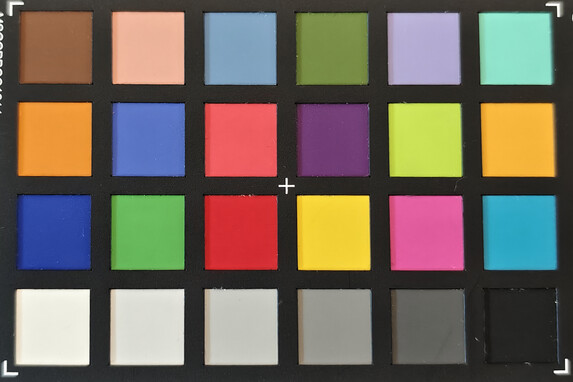
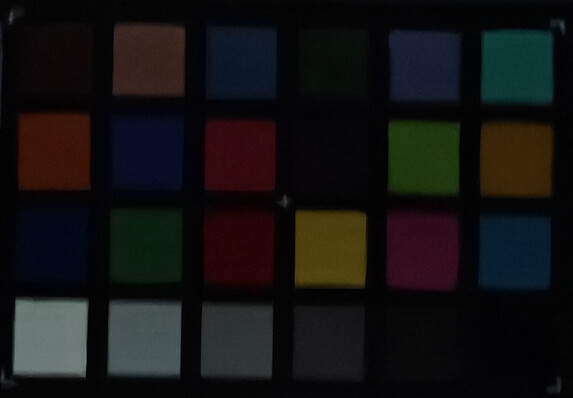
Display: Dual AMOLED screens with fast response times and 240 Hz PWM
The highlight of the X Fold5 is the foldable, 8.03-inch 120 Hz LTPO AMOLED panel, which achieved a peak brightness of 3,672 cd/m² (APL18) in our test. The 6.53-inch external display also uses LTPO technology with a variable refresh rate of up to 120 Hz but is slightly sharper at 457 PPI compared to the larger main screen.
As is typical for OLEDs, PWM is used to control the screen brightness, which can be observed via the flickering screen. According to Vivo, eye protection is implemented with a high PWM dimming frequency. Our display measurement results in around 240 Hz.
Illumination inner display
| |||||||||||||||||||||||||
Brightness Distribution: 96 %
Center on Battery: 1085 cd/m²
Contrast: ∞:1 (Black: 0 cd/m²)
ΔE ColorChecker Calman: 0.68 | ∀{0.5-29.43 Ø4.78}
ΔE Greyscale Calman: 1.1 | ∀{0.09-98 Ø5}
99.9% sRGB (Calman 2D)
Gamma: 2.247
CCT: 6545 K
Illumination outer display
| |||||||||||||||||||||||||
Brightness Distribution: 94 %
Center on Battery: 855 cd/m²
Contrast: ∞:1 (Black: 0 cd/m²)
ΔE ColorChecker Calman: 0.62 | ∀{0.5-29.43 Ø4.78}
ΔE Greyscale Calman: 1 | ∀{0.09-98 Ø5}
99.8% sRGB (Calman 2D)
Gamma: 2.218
CCT: 4794 K
| Vivo X Fold 5 AMOLED LTPO, 2480x2200, 8" | Oppo Find N5 AMOLED, 2480x2248, 8.1" | Xiaomi Mix Fold 4 AMOLED LPTO, 2488x2224, 8" | Google Pixel 9 Pro Fold OLED LTPO, 2152x2076, 8" | Vivo X Fold3 AMOLED, 2480x2200, 8" | |
|---|---|---|---|---|---|
| Screen | -48% | -135% | -16% | 5% | |
| Brightness middle (cd/m²) | 1085 | 1240 14% | 1111 2% | 1793 65% | 1793 65% |
| Brightness (cd/m²) | 1065 | 1179 11% | 1120 5% | 1599 50% | 1806 70% |
| Brightness Distribution (%) | 96 | 91 -5% | 99 3% | 66 -31% | 99 3% |
| Black Level * (cd/m²) | |||||
| Colorchecker dE 2000 * | 0.68 | 1.36 -100% | 3.42 -403% | 0.9 -32% | 0.9 -32% |
| Colorchecker dE 2000 max. * | 1.6 | 3.06 -91% | 5.92 -270% | 3.1 -94% | 2.1 -31% |
| Greyscale dE 2000 * | 1.1 | 2.4 -118% | 2.7 -145% | 1.7 -55% | 1.6 -45% |
| Gamma | 2.247 98% | 2.239 98% | 2.206 100% | 2.19 100% | 2.2 100% |
| CCT | 6545 99% | 6353 102% | 7081 92% | 6714 97% | 6595 99% |
* ... smaller is better
Screen Flickering / PWM (Pulse-Width Modulation)
| Screen flickering / PWM detected | 239.7 Hz Amplitude: 17 % | ||
The display backlight flickers at 239.7 Hz (worst case, e.g., utilizing PWM) . The frequency of 239.7 Hz is relatively low, so sensitive users will likely notice flickering and experience eyestrain at the stated brightness setting and below. In comparison: 53 % of all tested devices do not use PWM to dim the display. If PWM was detected, an average of 8095 (minimum: 5 - maximum: 343500) Hz was measured. | |||
Measurement series with fixed zoom level and different brightness settings (The amplitude curve at minimum brightness looks flat, but this is due to the scaling. The info box shows the enlarged version of the amplitude at minimum brightness)
We use Calman Ultimate analysis software from Portrait Displays to examine the extent of the deviations in the factory color calibration. The DeltaE 2000 values we determined for the individual colors and greyscales are extremely low.
Display Response Times
| ↔ Response Time Black to White | ||
|---|---|---|
| 1.3 ms ... rise ↗ and fall ↘ combined | ↗ 0.6 ms rise | |
| ↘ 0.7 ms fall | ||
| The screen shows very fast response rates in our tests and should be very well suited for fast-paced gaming. In comparison, all tested devices range from 0.1 (minimum) to 240 (maximum) ms. » 6 % of all devices are better. This means that the measured response time is better than the average of all tested devices (20.2 ms). | ||
| ↔ Response Time 50% Grey to 80% Grey | ||
| 1.6 ms ... rise ↗ and fall ↘ combined | ↗ 0.7 ms rise | |
| ↘ 0.9 ms fall | ||
| The screen shows very fast response rates in our tests and should be very well suited for fast-paced gaming. In comparison, all tested devices range from 0.165 (minimum) to 636 (maximum) ms. » 7 % of all devices are better. This means that the measured response time is better than the average of all tested devices (31.6 ms). | ||
Cover display: PWM and response times
Performance, emissions and battery life: X Fold5 with high heat emissions
Those who want a powerful chipset will get their money's worth with the X Fold 5, although the Oppo Find N5 with the Snapdragon 8 Elite SoC performs a lot better in the benchmarks.
That being said, the Snapdragon 8 Gen 3 in the X Fold5 is a good step forward compared to the Snapdragon 8 Gen 2 chip in the X Fold3 predecessor.
The pronounced temperature development leads to significant throttling of the system in the 3D Mark Wild Life Stress tests. We measured nearly 60 °C at the peak, which is clearly too much.
The 6,000 mAh battery, which can be charged via the USB Type-C with up to 80 W and wirelessly at 40 W, is remarkable. Surprisingly, however, this only gives us a battery life of 15 hours in our standard Wi-Fi Web surfing test.
| Geekbench AI | |
| Single Precision NPU 1.5 | |
| Average of class Smartphone (80 - 5210, n=60, last 2 years) | |
| Average Qualcomm Snapdragon 8 Gen 3 (422 - 499, n=4) | |
| Vivo X Fold 5 | |
| Half Precision NPU 1.5 | |
| Average of class Smartphone (80 - 36297, n=60, last 2 years) | |
| Average Qualcomm Snapdragon 8 Gen 3 (415 - 497, n=4) | |
| Vivo X Fold 5 | |
| Quantized NPU 1.5 | |
| Average of class Smartphone (133 - 49889, n=60, last 2 years) | |
| Average Qualcomm Snapdragon 8 Gen 3 (933 - 1133, n=4) | |
| Vivo X Fold 5 | |
| Vivo X Fold 5 | Oppo Find N5 | Xiaomi Mix Fold 4 | Google Pixel 9 Pro Fold | Vivo X Fold3 | Average 512 GB UFS 4.1 Flash | Average of class Smartphone | |
|---|---|---|---|---|---|---|---|
| AndroBench 3-5 | -6% | 17% | -29% | 15% | 13% | -22% | |
| Sequential Read 256KB (MB/s) | 3879.64 | 3437.47 -11% | 3984.91 3% | 1827.6 -53% | 3556.73 -8% | 3734 ? -4% | 2228 ? -43% |
| Sequential Write 256KB (MB/s) | 3545.98 | 3251.98 -8% | 3073.45 -13% | 1126.34 -68% | 3076.11 -13% | 3209 ? -10% | 1852 ? -48% |
| Random Read 4KB (MB/s) | 311.09 | 269.51 -13% | 369.73 19% | 263.31 -15% | 387.96 25% | 380 ? 22% | 296 ? -5% |
| Random Write 4KB (MB/s) | 309.42 | 339.32 10% | 485.32 57% | 376.94 22% | 486.21 57% | 438 ? 42% | 339 ? 10% |
(-) The maximum temperature on the upper side is 59.9 °C / 140 F, compared to the average of 35.2 °C / 95 F, ranging from 21.9 to 247 °C for the class Smartphone.
(-) The bottom heats up to a maximum of 49.4 °C / 121 F, compared to the average of 34 °C / 93 F
(-) In idle usage, the average temperature for the upper side is 47.5 °C / 118 F, compared to the device average of 32.9 °C / 91 F.
3DMark Steel Nomad Stress Test
| 3DMark | |
| Wild Life Extreme Stress Test | |
| Google Pixel 9 Pro Fold | |
| Vivo X Fold 5 | |
| Vivo X Fold3 | |
| Xiaomi Mix Fold 4 | |
| Oppo Find N5 | |
| Solar Bay Stress Test Stability | |
| Vivo X Fold 5 | |
| Vivo X Fold3 | |
| Oppo Find N5 | |
| Xiaomi Mix Fold 4 | |
Vivo X Fold 5 audio analysis
(+) | speakers can play relatively loud (86.7 dB)
Bass 100 - 315 Hz
(-) | nearly no bass - on average 18% lower than median
(±) | linearity of bass is average (12.9% delta to prev. frequency)
Mids 400 - 2000 Hz
(±) | higher mids - on average 7% higher than median
(±) | linearity of mids is average (9.1% delta to prev. frequency)
Highs 2 - 16 kHz
(±) | higher highs - on average 6.8% higher than median
(±) | linearity of highs is average (8.1% delta to prev. frequency)
Overall 100 - 16.000 Hz
(±) | linearity of overall sound is average (22.3% difference to median)
Compared to same class
» 46% of all tested devices in this class were better, 7% similar, 47% worse
» The best had a delta of 11%, average was 35%, worst was 134%
Compared to all devices tested
» 64% of all tested devices were better, 6% similar, 30% worse
» The best had a delta of 4%, average was 24%, worst was 134%
Vivo X Fold3 audio analysis
(+) | speakers can play relatively loud (89 dB)
Bass 100 - 315 Hz
(-) | nearly no bass - on average 23.2% lower than median
(±) | linearity of bass is average (9.1% delta to prev. frequency)
Mids 400 - 2000 Hz
(±) | reduced mids - on average 6% lower than median
(+) | mids are linear (5.2% delta to prev. frequency)
Highs 2 - 16 kHz
(±) | higher highs - on average 6.7% higher than median
(+) | highs are linear (1.7% delta to prev. frequency)
Overall 100 - 16.000 Hz
(±) | linearity of overall sound is average (18.9% difference to median)
Compared to same class
» 23% of all tested devices in this class were better, 10% similar, 68% worse
» The best had a delta of 11%, average was 35%, worst was 134%
Compared to all devices tested
» 43% of all tested devices were better, 8% similar, 49% worse
» The best had a delta of 4%, average was 24%, worst was 134%
| Vivo X Fold 5 6000 mAh | Oppo Find N5 5600 mAh | Xiaomi Mix Fold 4 5100 mAh | Google Pixel 9 Pro Fold 4650 mAh | Vivo X Fold3 5500 mAh | |
|---|---|---|---|---|---|
| Battery runtime | |||||
| WiFi v1.3 (h) | 15.2 | 21.8 43% | 16.1 6% | 14.7 -3% | 12.6 -17% |
Notebookcheck's overall impressions of the Vivo X Fold5
If you want to treat yourself to the latest foldable with a Zeiss camera, the Vivo X Fold5 still needs to be imported if you are outside China or India. However, support for global languages including German and easy Google Play Store access mean that restrictions are far and few between.
Vivo X Fold 5
- 08/13/2025 v8
Marcus Herbrich
Potential alternatives in comparison
Image | Model / Review | Price | Weight | Drive | Display |
|---|---|---|---|---|---|
| Vivo X Fold 5 Qualcomm Snapdragon 8 Gen 3 ⎘ Qualcomm Adreno 750 ⎘ 16 GB Memory, 512 GB | Amazon: 1. $12.68 Puccy 4 Pack Screen Protecto... 2. $3.99 Camera Lens Cover Tempered G... 3. $19.99 Portable BT Earbuds Compatib... List Price: 1300€ | 217 g | 512 GB UFS 4.1 Flash | 8.03" 2480x2200 413 PPI AMOLED LTPO | |
| Oppo Find N5 Qualcomm Snapdragon 8 Elite ⎘ Qualcomm Adreno 830 ⎘ 12 GB Memory, 512 GB | Amazon: 1. $9.96 Kepuch Screen Protector Comp... 2. $6.07 FZZSZS (3-Pack for Oppo Find... 3. $2.85 Transparent Glass Camera Len... List Price: 1577€ | 229 g | 512 GB UFS 4.0 Flash | 8.12" 2480x2248 412 PPI AMOLED | |
| Xiaomi Mix Fold 4 Qualcomm Snapdragon 8 Gen 3 ⎘ Qualcomm Adreno 750 ⎘ 12 GB Memory, 512 GB | Amazon: 1. $28.99 JSAUX Cup Holder Universal M... 2. $9.99 MOOISVS [2Pack for Xiaomi Mi... 3. $31.99 xuenair Z Fold 7 6 5 4 3 2 C... List Price: 1250€ | 226 g | 512 GB UFS 4.0 Flash | 7.98" 2488x2224 418 PPI AMOLED LPTO | |
| Google Pixel 9 Pro Fold Google Tensor G4 ⎘ ARM Mali-G715 MP7 ⎘ 16 GB Memory, 256 GB | Amazon: 1. $1,275.00 Google Pixel 9 Pro Fold - Un... 2. $24.82 Ferilinso 2 Pack Screen Prot... 3. $29.99 Ferilinso 2 Pack Privacy Scr... List Price: 1899€ | 257 g | 256 GB UFS 3.1 Flash | 8.00" 2152x2076 374 PPI OLED LTPO | |
| Vivo X Fold3 Qualcomm Snapdragon 8 Gen 2 ⎘ Qualcomm Adreno 740 ⎘ 16 GB Memory, 1024 GB | Amazon: 1. $7.37 KJYFOANI For Vivo X Fold3 Sc... 2. $12.21 KJYFOANI For Vivo X Fold3 Sc... 3. $19.95 BoxWave Screen Protector Com... List Price: 1200€ | 219 g | 1 TB UFS 4.0 Flash | 8.03" 2480x2200 413 PPI AMOLED |
Transparency
The selection of devices to be reviewed is made by our editorial team. The test sample was provided to the author as a loan by the manufacturer or retailer for the purpose of this review. The lender had no influence on this review, nor did the manufacturer receive a copy of this review before publication. There was no obligation to publish this review. As an independent media company, Notebookcheck is not subjected to the authority of manufacturers, retailers or publishers.
This is how Notebookcheck is testing
Every year, Notebookcheck independently reviews hundreds of laptops and smartphones using standardized procedures to ensure that all results are comparable. We have continuously developed our test methods for around 20 years and set industry standards in the process. In our test labs, high-quality measuring equipment is utilized by experienced technicians and editors. These tests involve a multi-stage validation process. Our complex rating system is based on hundreds of well-founded measurements and benchmarks, which maintains objectivity. Further information on our test methods can be found here.







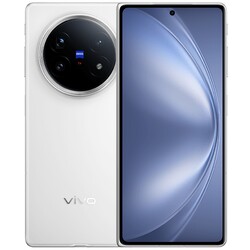




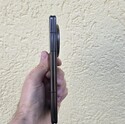
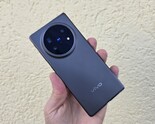

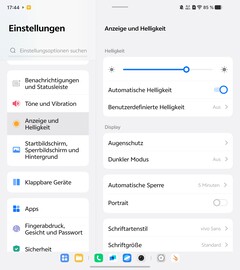










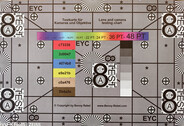

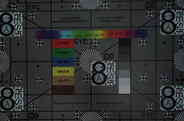


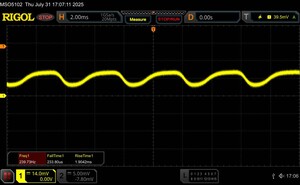





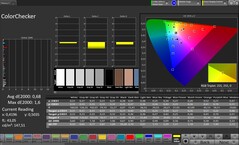

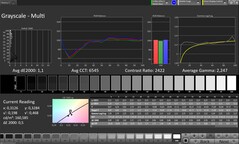
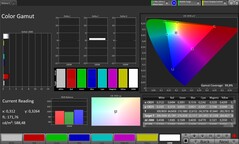
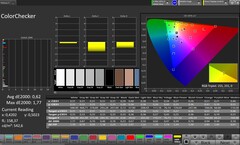
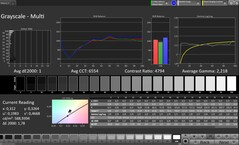
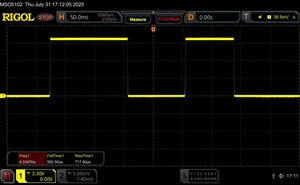
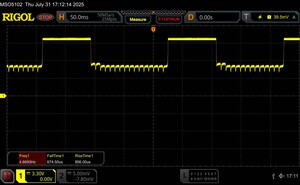
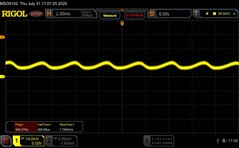
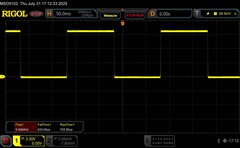
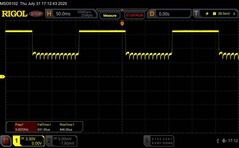



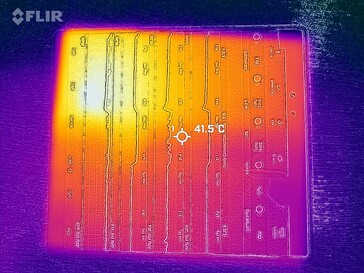
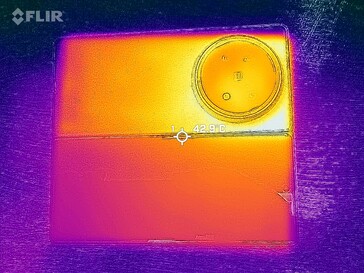
 Total Sustainability Score:
Total Sustainability Score: 




